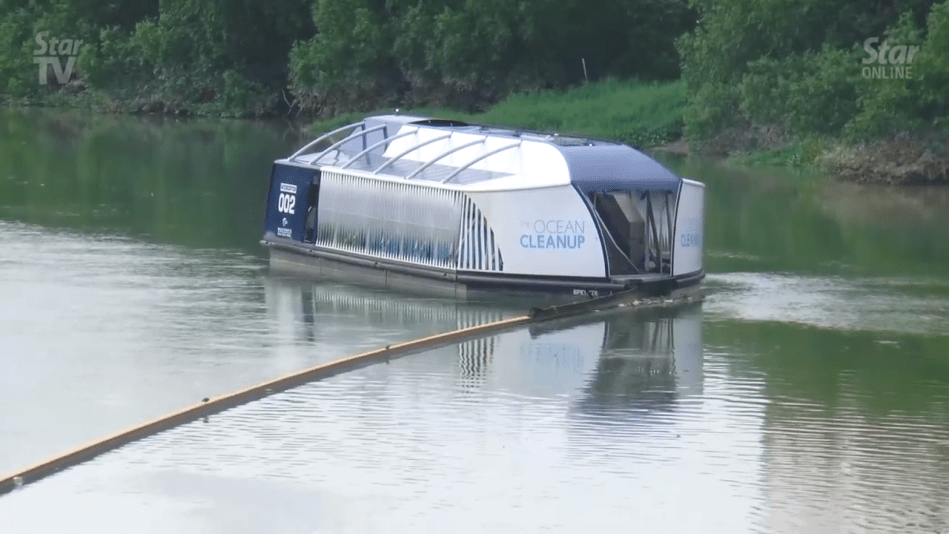Trash flowing into rivers and ultimately into oceans is one of the biggest causes of environmental pollution. Ocean Cleanup, a Netherlands-based environmental organization, has introduced a unique solution to the problem — a trash-eating boat called the “Interceptor” that automatically cleans up all waste flowing in the water. According to estimates, there could be more plastic than fish in the oceans by 2050. This is clearly a situation we should prevent if we are to maintain the balance of the natural ecosystem.
The trash-cleaning boat
“The Interceptor is fully solar powered. Trash flows up its belt… and into a ‘shuttle’ bin, which deposits the waste in one of six dumpsters situated below. Once the barge is full, the system sends a text message to operators in the area, who come with a tugboat and pull the bins to shore. It can capture some 50,000 kilograms [110,000 pounds] of trash a day, and is designed to last 20 years,” according to Wired.
The Interceptor has been designed with the aim of mass production and is expected to be used around the world. Since all electricity for the Interceptor, whether in the shuttle, conveyor belt, running the lights, used for data transmission, sensors, etc., comes from solar energy, it remains an energy-neutral vehicle. Plus, all Interceptors built will be connected via the Internet. The team handling the boats will have real-time data on waste collected by the vehicles, both individually and in total.
According to Ocean Cleanup, the Interceptor can work nonstop, all automatically, with little to no human involvement. The only regular human assistance that the boat needs is when its dumpsters are full. With a storage space of 50 cubic meters, the waste collected by just one Interceptor is enough to fill multiple garbage trucks.

At present, Ocean Cleanup has two active Interceptors, with one deployed at the Cengkareng drain in Jakarta, Indonesia, and the second cleaning up the Klang River in Malaysia. The organization has signed agreements to supply Interceptors to countries like Thailand, Honduras, Vietnam, and the Dominican Republic, most of which should be fulfilled by next year. Ocean Cleanup was founded by a Dutch inventor, Boyan Slat, who also acts as the CEO of the organization. It aims to tackle plastic waste in at least 1,000 rivers by 2025.
Ocean plastic problem
According to a study conducted in 2017, almost 90 percent of the plastic waste in the oceans flows into it through just 10 rivers, with Asia accounting for 8 of them. The remaining two rivers are in Africa. The common feature of these rivers is that they all run through regions that have high population densities and poor waste management. “The more waste there is in a catchment area that is not disposed of properly, the more plastic ultimately ends up in the river and takes this route to the sea,” the researchers concluded (CNN).

Microplastics in the oceans end up getting eaten by fish, thereby becoming a part of the food chain. In fact, these fish can end up on your table. It is estimated that the average human being ingests about 5 grams of plastic every week, which adds up to about half a pound of plastic per year. Over a period of time, the proliferation of microplastics in the oceans could not only disrupt the sea ecosystem, but the microplastics also make it dangerous for us to consume seafood.







